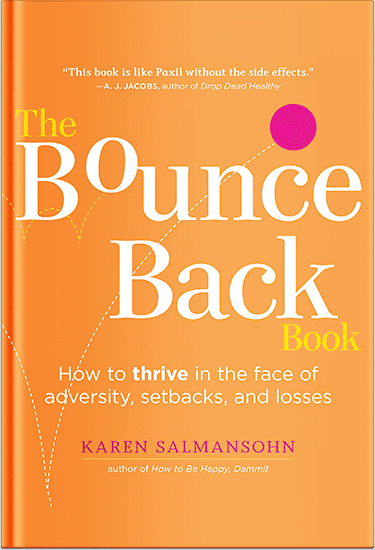 In today’s era, grabbing users’ attention can be quite a task for developers. One approach to boost app involvement is utilizing location-triggered alerts. These alerts take advantage of geofencing technology to provide users with relevant notifications.
In today’s era, grabbing users’ attention can be quite a task for developers. One approach to boost app involvement is utilizing location-triggered alerts. These alerts take advantage of geofencing technology to provide users with relevant notifications.
I am sharing about this topic because I’m a bestselling entrepreneur and author with about 2 million books sold globally. Plus I’m well known for my peak performance entrepreneur consulting.
I love sharing insights and strategies to empower people and companies to be more successful.
This article delves into how integrating geofencing can enhance app engagement, increase user loyalty, and enhance the user experience.
Understanding Geofencing
Geofencing establishes borders around geographic regions. Affected devices can activate functions, like sending alerts when users cross into or out of these designated areas. Geofencing depends on GPS, Wi-Fi, or mobile data to precisely determine user whereabouts. By incorporating this innovation into apps, businesses can provide tailored interactions that enhance user involvement.
Enhancing User Experience
Location-specific notifications improve the user experience by providing interactions that are relevant to their surroundings. For example, a retail application can inform customers about in-store deals when they are close by. Travel applications can also notify users about points of interest. This personalized touch helps users feel appreciated and recognized, strengthening their bond with the application.
Driving User Retention
Ensuring users stick around is vital for an app’s overall success. Geofencing aids in user retention, by offering them updates in real-time. For instance, fitness apps can nudge users to work out as they near a gym. Dining apps could recommend nearby eateries in the same way. These personalized notifications help keep users engaged with the app, boosting the chances of them sticking around for the long haul.
Boosting In-App Purchases
In apps, in-app purchases are a source of income for developers and businesses alike. Using geofencing can be a game changer when it comes to driving these purchases. For example, in apps, users can receive notifications about offers when they are close to a store. In gaming apps, players may unlock in-game items based on their location. By offering location-based perks like these, app creators can motivate users to make purchases and boost the app’s revenue. This becomes particularly significant for small businesses that are willing to grow in the right direction.
Personalization and User Engagement
Creating a personalized experience is crucial for engaging users and standing out in a competitive market space. Utilizing geofencing technology allows applications to offer customized content according to the user’s location. For instance, weather applications can offer forecasts based on the user’s location, while event applications can showcase nearby events and activities tailored to individual preferences. This personalized approach not only boosts user engagement but also sets the app apart in a saturated market.
Improving User Feedback
It’s essential to grasp how users behave to enhance apps. Geofencing helps gather location information that reveals user habits and preferences. This data enables developers to tweak app features to meet user requirements. By consistently updating the app with feedback from users, developers can ensure high levels of user satisfaction.
Ethical Considerations
Geofencing has several advantages. However, ethical concerns should be the guiding principle in its usage. The protection of user privacy must be a concern with data collection methods. Users should be given the choice to decide whether to participate in location monitoring or not. Respecting user consent builds trust. It ensures that location-based notifications improve rather than disrupt user interaction.
Future of Geofencing
The potential for geofencing in the future is truly promising as technology progresses further and geofencing functionalities become more accurate and adaptable with time. Integrating geofencing with technologies such as augmented reality will create opportunities for engaging users on a whole new level. Companies that adopt these advancements will lead the way in app development by providing excellent experiences to their users.
Summary: Geofencing Can Boost App Engagement
Geofencing is a tool that can enhance user interaction by providing personalized and location-based alerts to users. This can enhance their experience, increase user retention rates and in-app sales, and improve user satisfaction overall, as long as it is used ethically in the constantly changing world of mobile apps.
Get More Success Tools
Explore my popular online program: Make Profitable Courses Without The Overwhelm.
P.S. Before you zip off to your next Internet pit stop, check out these 2 game changers below - that could dramatically upscale your life.
1. Check Out My Book On Enjoying A Well-Lived Life: It’s called "Your To Die For Life: How to Maximize Joy and Minimize Regret Before Your Time Runs Out." Think of it as your life’s manual to cranking up the volume on joy, meaning, and connection. Learn more here.
2. Life Review Therapy - What if you could get a clear picture of where you are versus where you want to be, and find out exactly why you’re not there yet? That’s what Life Review Therapy is all about.. If you’re serious about transforming your life, let’s talk. Learn more HERE.
Think happier. Think calmer.
Think about subscribing for free weekly tools here.
No SPAM, ever! Read the Privacy Policy for more information.
One last step!
Please go to your inbox and click the confirmation link we just emailed you so you can start to get your free weekly NotSalmon Happiness Tools! Plus, you’ll immediately receive a chunklette of Karen’s bestselling Bounce Back Book!


 In today’s era, grabbing users’ attention can be quite a task for developers. One approach to boost app involvement is utilizing location-triggered alerts. These alerts take advantage of geofencing technology to provide users with relevant notifications.
In today’s era, grabbing users’ attention can be quite a task for developers. One approach to boost app involvement is utilizing location-triggered alerts. These alerts take advantage of geofencing technology to provide users with relevant notifications.